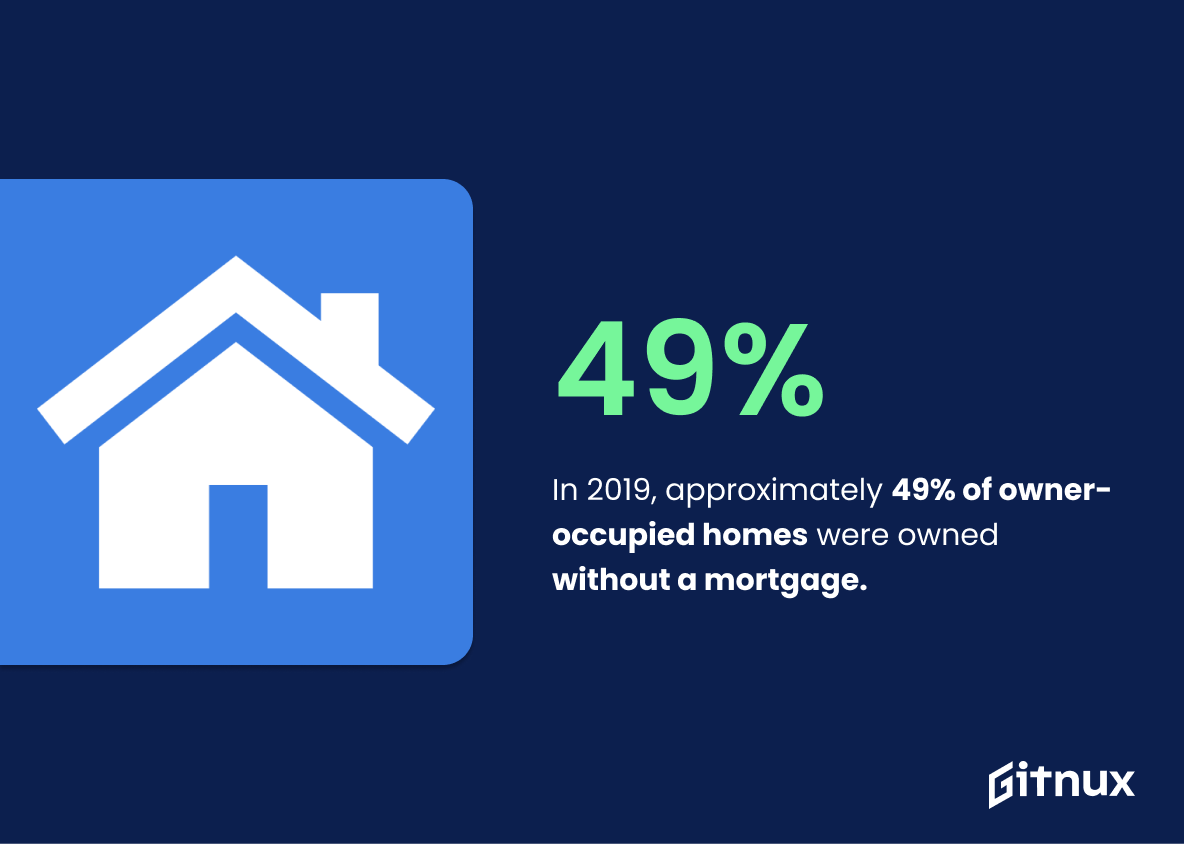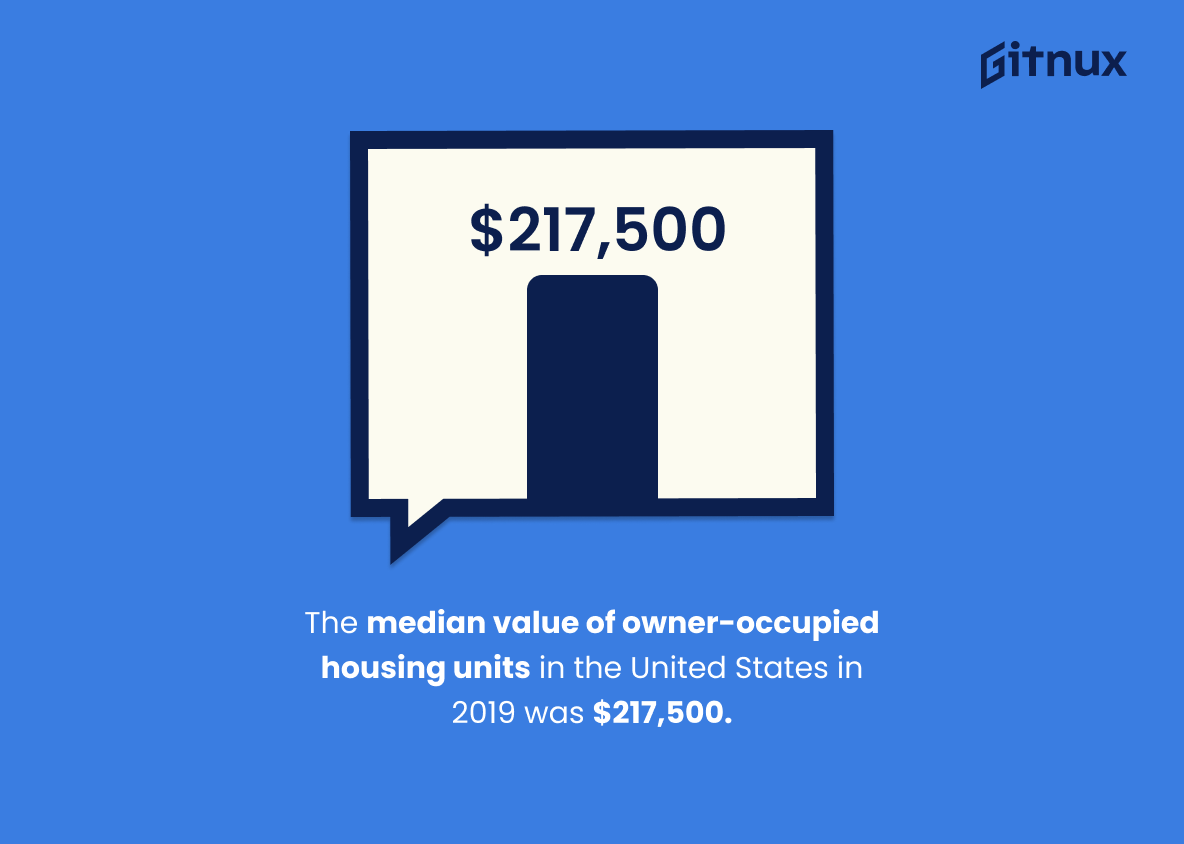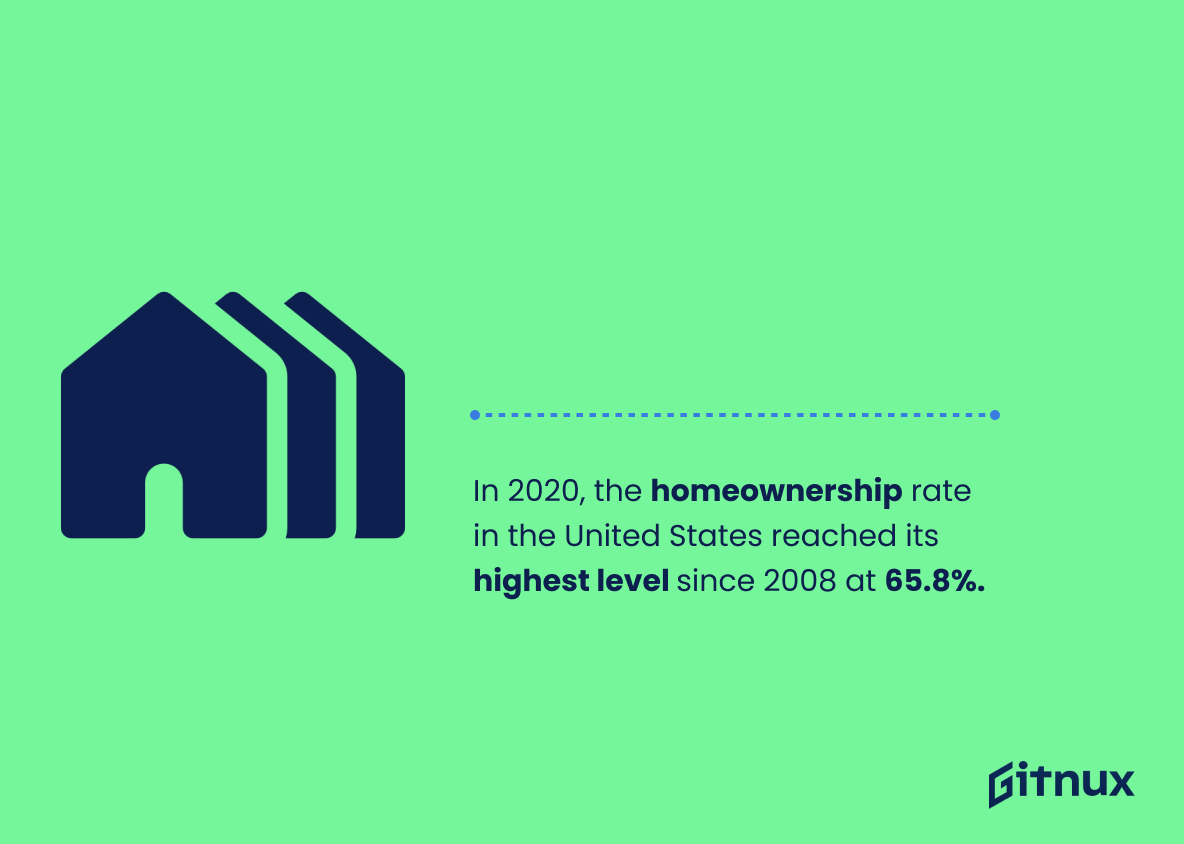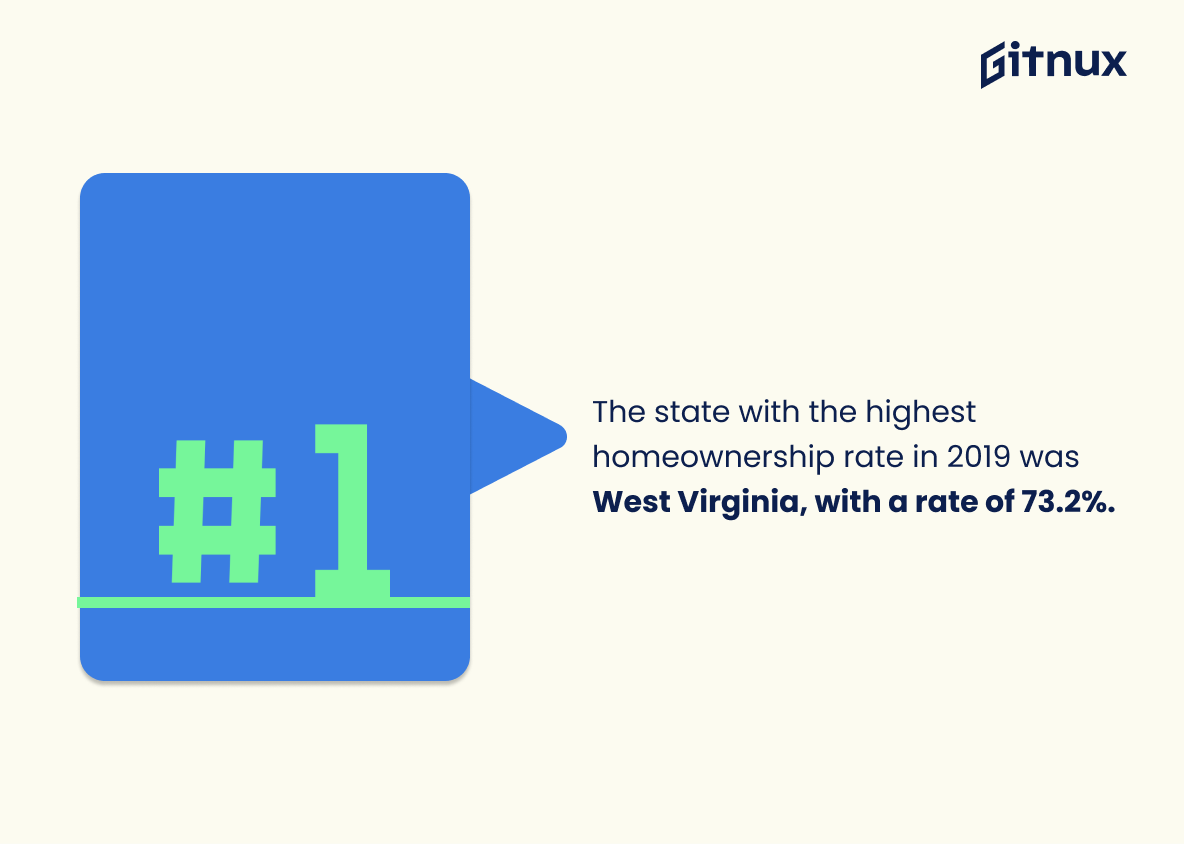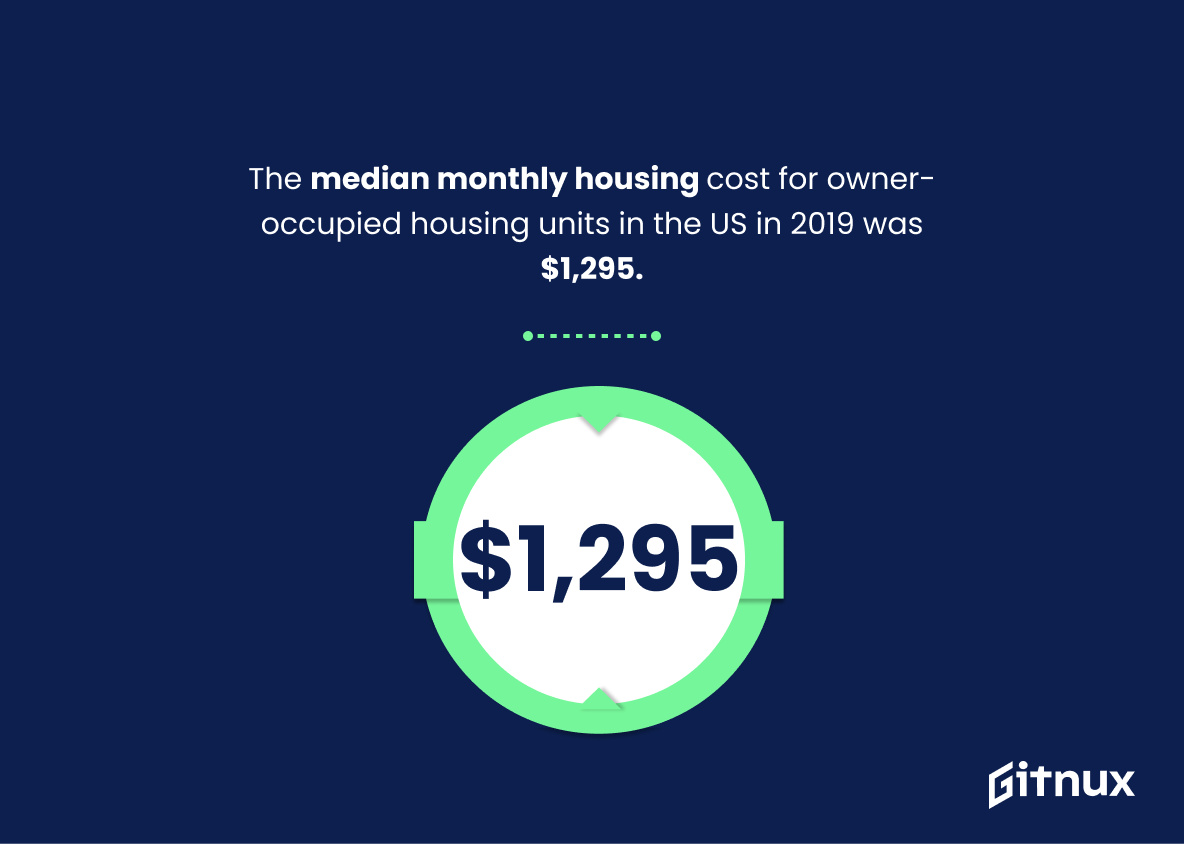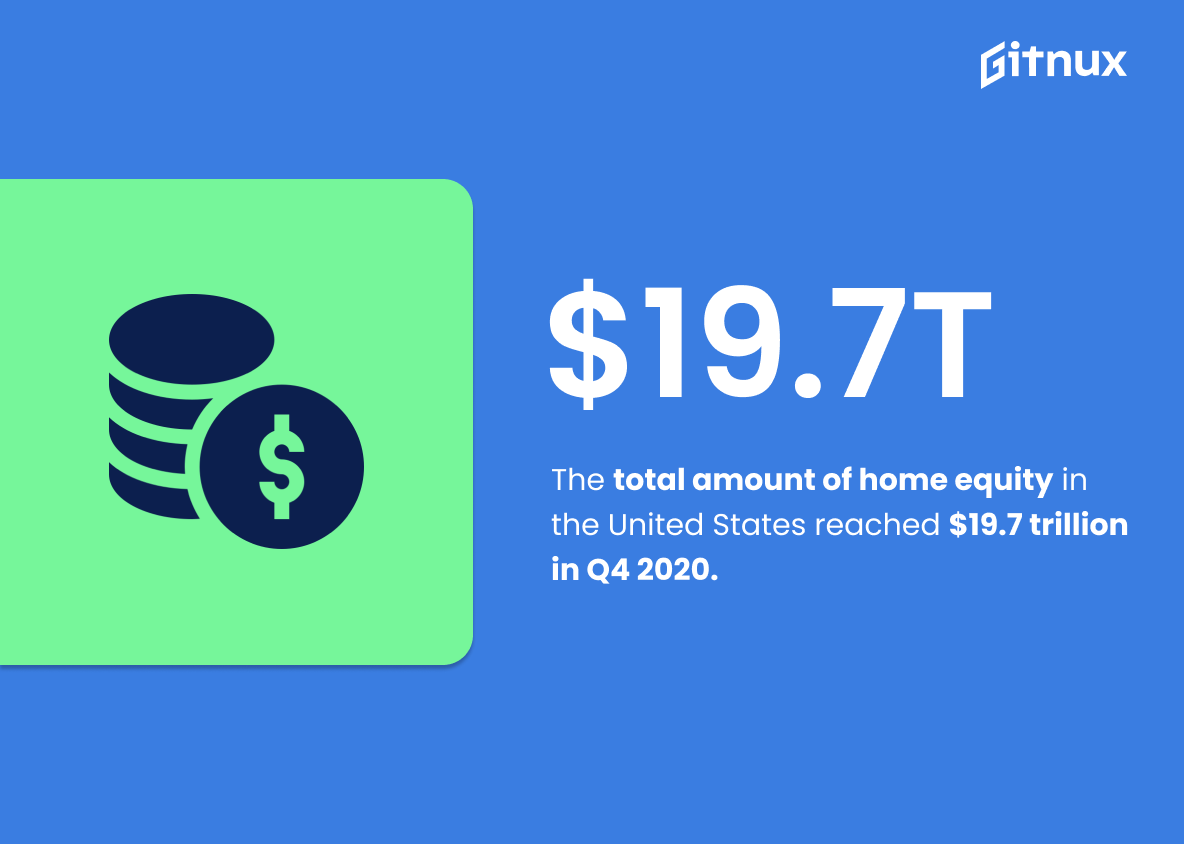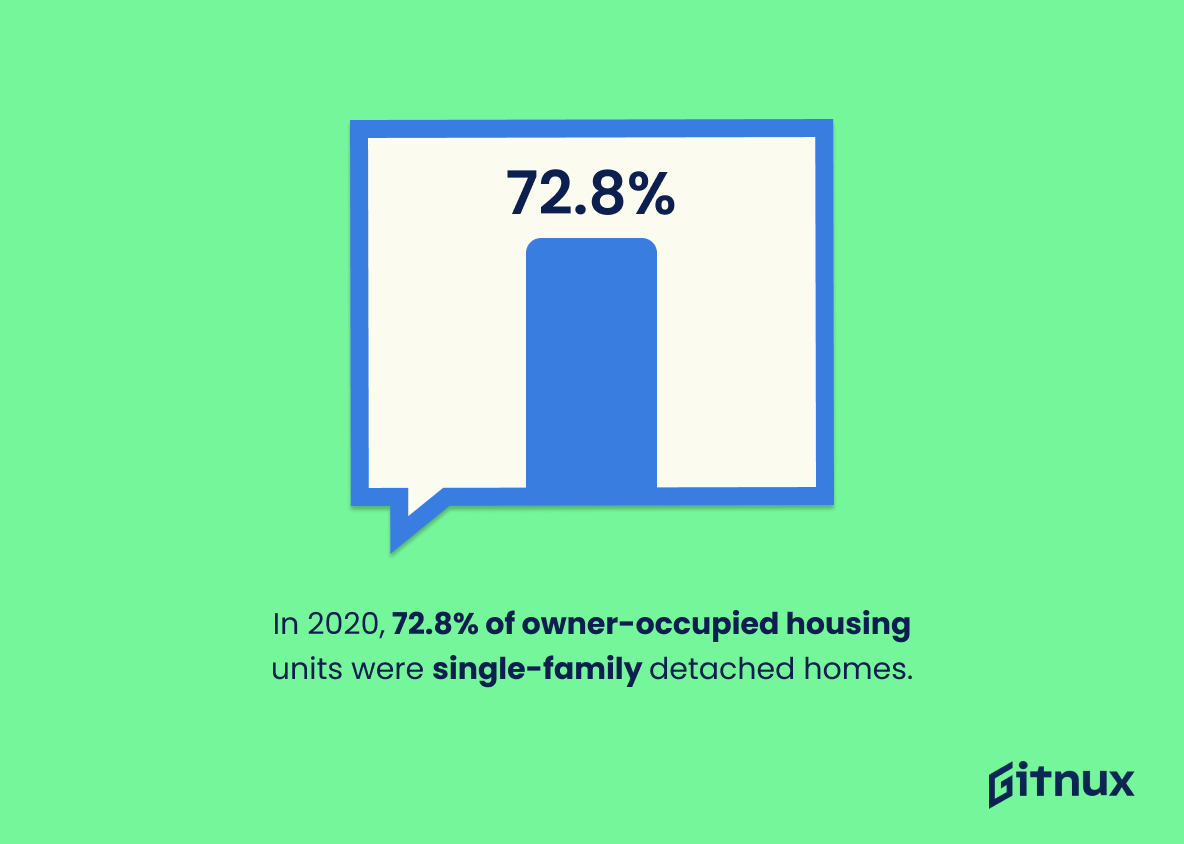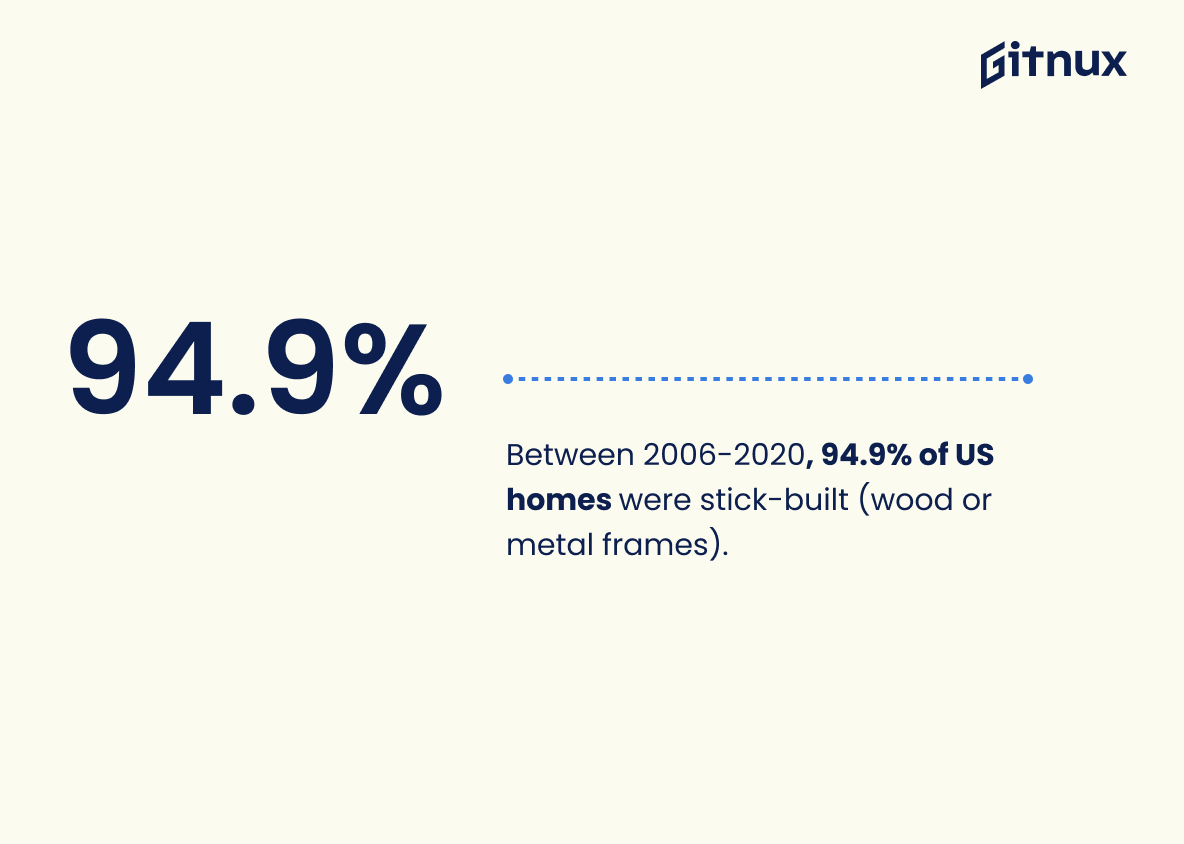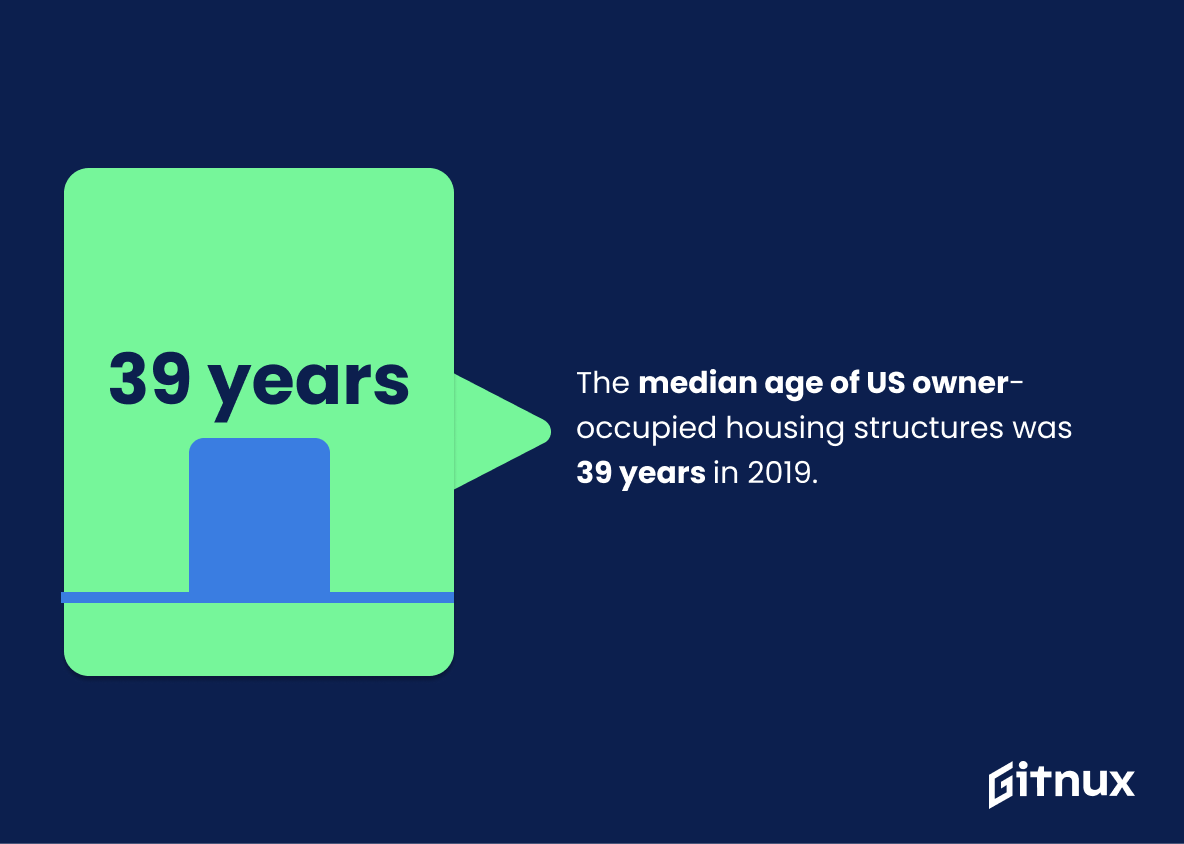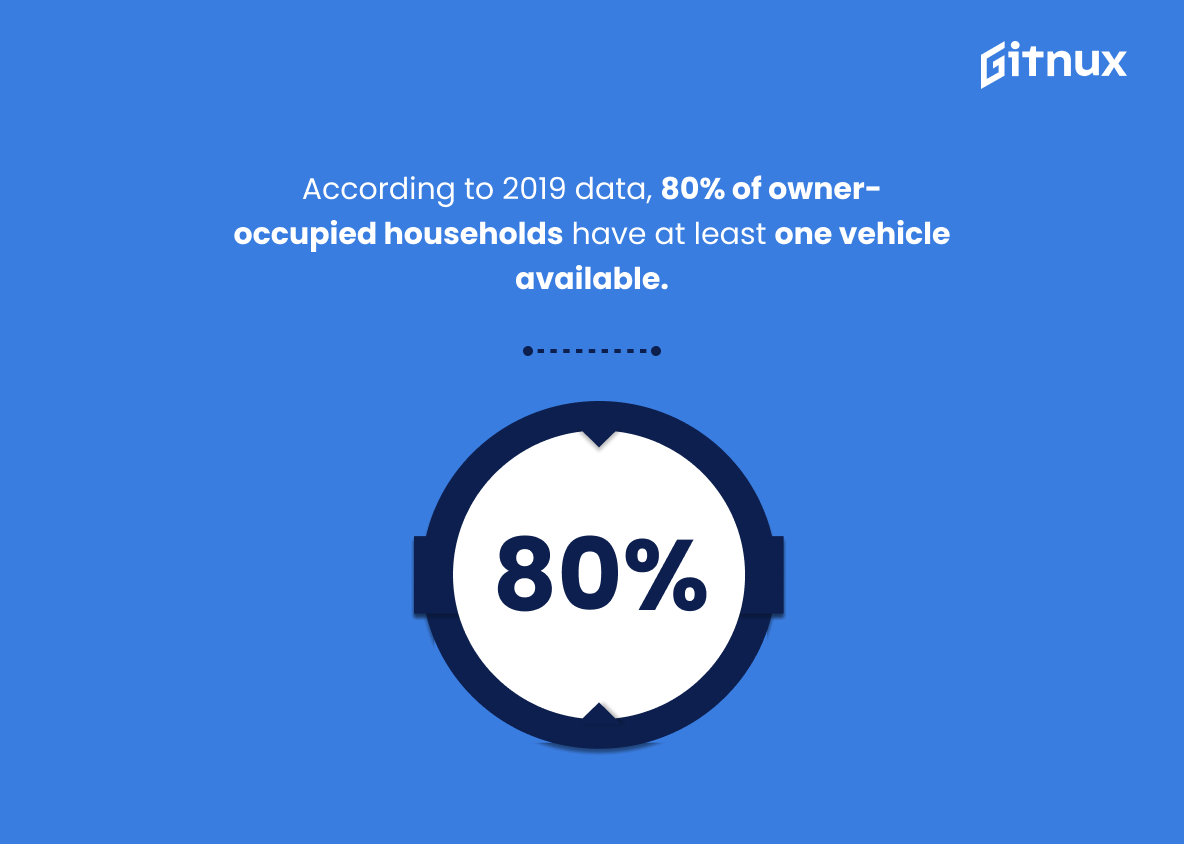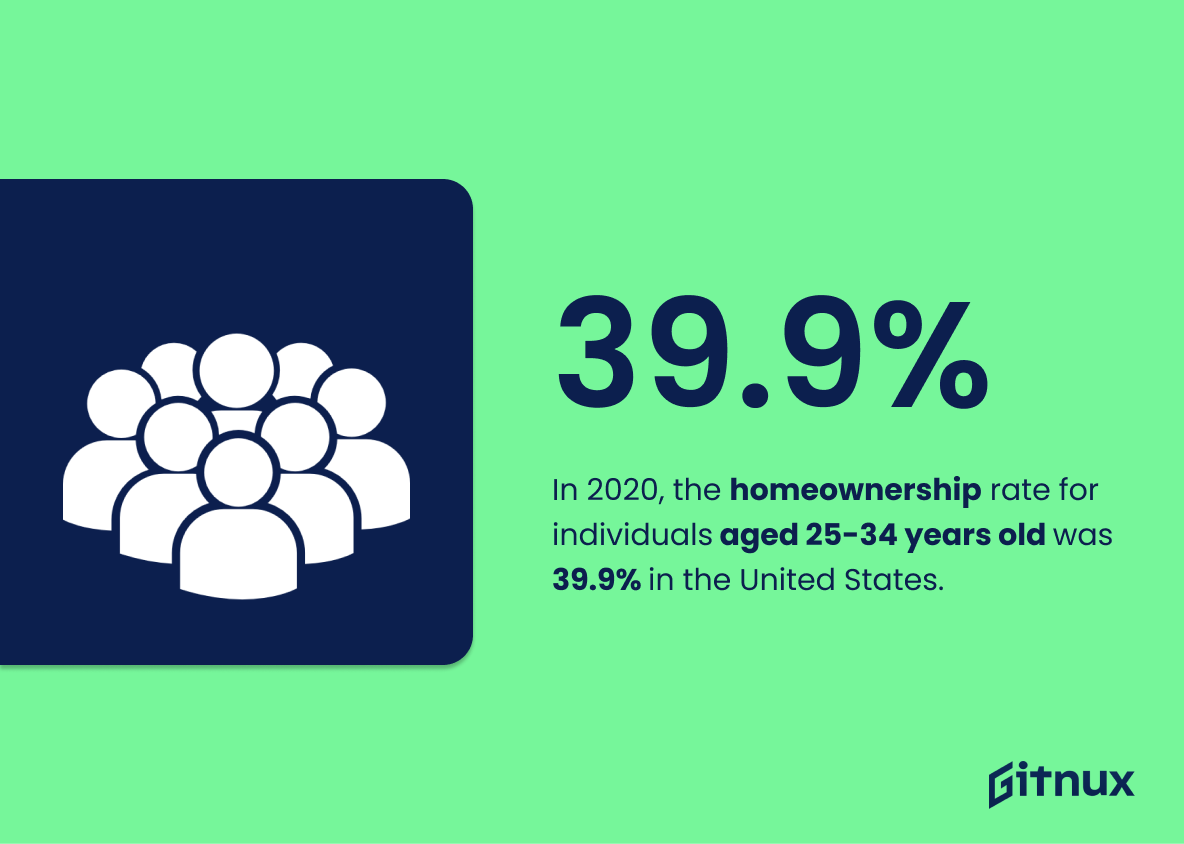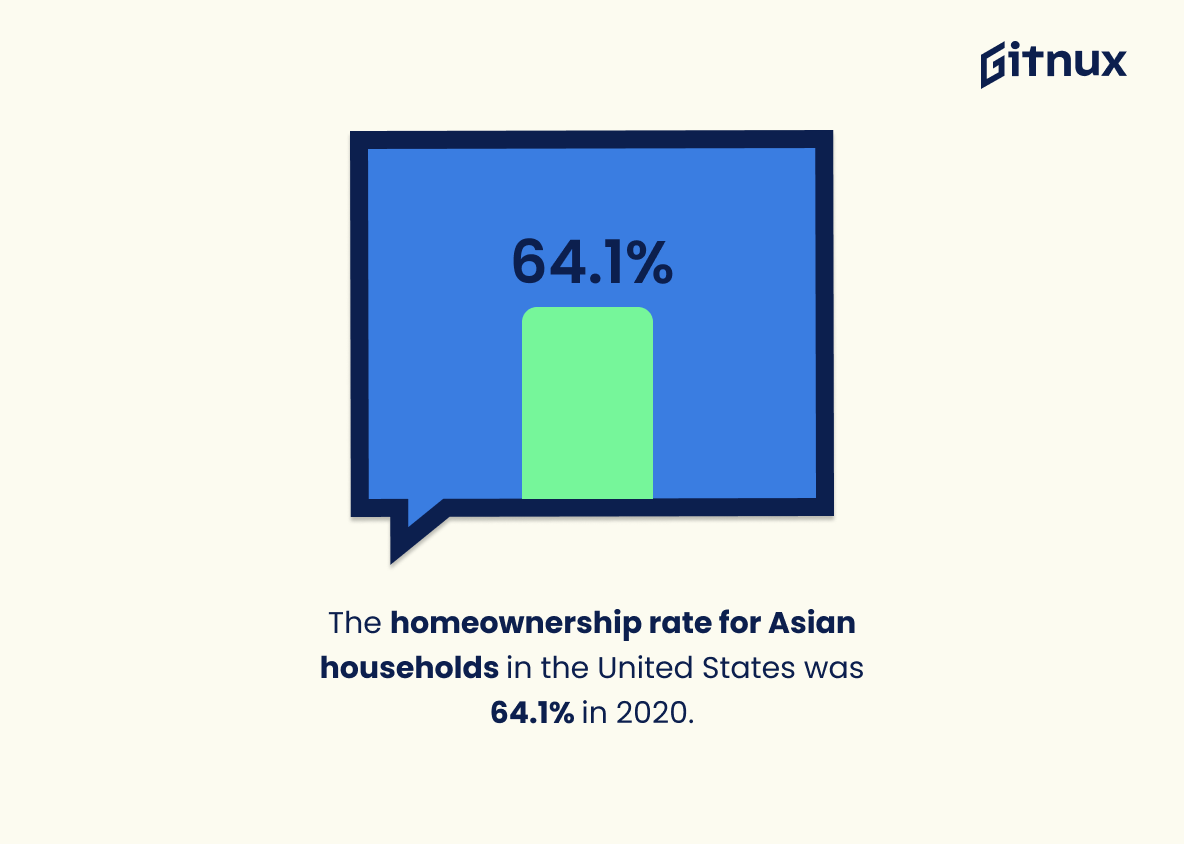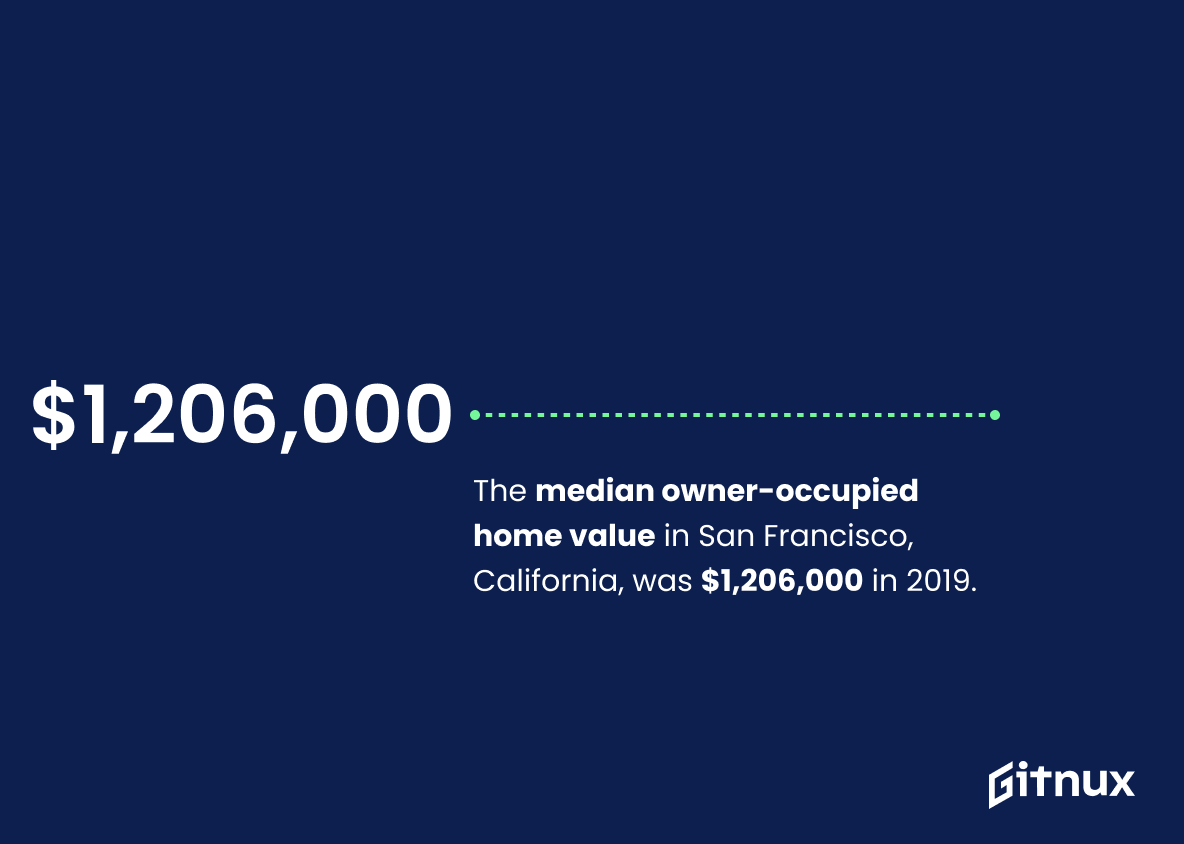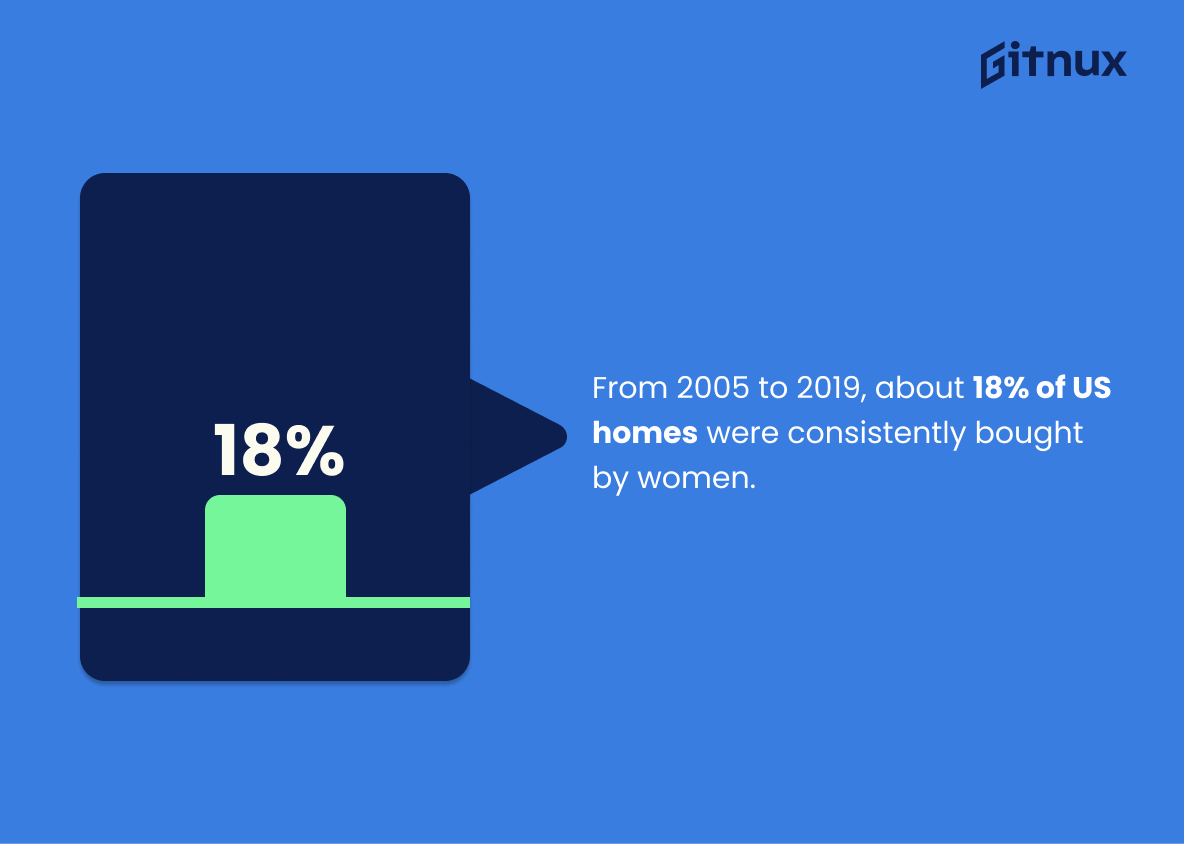Owner-occupied housing is an important part of the US economy, and understanding its statistics can provide valuable insight into trends in homeownership. This blog post will explore 20 different owner-occupied housing statistics from 2019 to 2020 that cover topics such as overall ownership rates, median home values, net worth of owners, age of homes and more. We’ll also look at how these numbers vary by region or demographic group. By examining this data we can gain a better understanding of the current state of homeowner occupancy in America today.
This statistic is a powerful indicator of the prevalence of owner-occupied housing in the US. It shows that the majority of residential properties are owned by individuals, rather than rented or owned by businesses or other entities. This statistic is important to consider when discussing the state of the housing market, as it provides insight into the number of people who are able to purchase their own homes. Additionally, this statistic can be used to compare the rate of owner-occupied housing in the US to other countries, and to track changes in the rate over time.
The homeownership rate in the United States varied by race in 2020; 74.5% of White households own their homes.
This statistic is a powerful indicator of the disparities in homeownership between White households and other racial groups in the United States. It highlights the need for further investigation into the reasons behind this discrepancy and the potential solutions to address it. This is especially pertinent in a blog post about Owner Occupied Housing Statistics, as it provides a valuable insight into the current state of the housing market.
Owner Occupied Housing Statistics Overview
In 2019, approximately 49% of owner-occupied homes were owned without a mortgage.
This statistic is a telling indication of the financial stability of owner-occupied homes. It suggests that a significant portion of homeowners are able to purchase their homes outright, without the need for a mortgage. This speaks to the financial security of these homeowners, and could be a sign of a healthy housing market.
The median value of owner-occupied housing units in the United States in 2019 was $217,500.
This statistic is a powerful indicator of the state of owner-occupied housing in the United States. It provides a snapshot of the average value of homes owned by individuals, giving readers an idea of the financial investment required to purchase a home. It also serves as a benchmark for comparison with other housing markets, allowing readers to gauge the relative affordability of owner-occupied housing in different areas.
In 2020, the homeownership rate in the United States reached its highest level since 2008 at 65.8%.
This statistic is a testament to the resilience of the American housing market. After the 2008 financial crisis, the homeownership rate plummeted to its lowest level in decades. However, the rate has since recovered and is now at its highest level since 2008. This is a positive sign for the housing market and a sign of economic stability.
The state with the highest homeownership rate in 2019 was West Virginia, with a rate of 73.2%.
This statistic is significant in the context of owner occupied housing statistics because it highlights the fact that West Virginia has the highest rate of homeownership in the country. This indicates that the state is doing something right when it comes to encouraging and supporting homeownership, and it could be a model for other states to follow.
The median monthly housing cost for owner-occupied housing units in the US in 2019 was $1,295.
This statistic is a key indicator of the financial burden of owning a home in the US. It provides insight into the affordability of housing for those who are looking to purchase a home, as well as those who already own one. It also serves as a benchmark for comparing the cost of housing across different regions and states. By understanding the median monthly housing cost for owner-occupied housing units, we can gain a better understanding of the overall housing market and the financial implications of owning a home.
The total amount of home equity in the United States reached $19.7 trillion in Q4 2020.
This statistic is a testament to the strength of the US housing market, as it shows that the total amount of home equity in the country has reached an all-time high. This is a positive sign for homeowners, as it indicates that their investments in their homes are paying off. It also speaks to the overall health of the economy, as it suggests that people are feeling confident enough to invest in their homes. This is an important statistic to consider when discussing owner-occupied housing statistics, as it provides a snapshot of the current state of the market.
In 2020, 72.8% of owner-occupied housing units were single-family detached homes.
This statistic is a telling indication of the prevalence of single-family detached homes in the owner-occupied housing market. It speaks to the fact that the majority of owner-occupied housing units are single-family detached homes, which is an important factor to consider when discussing the state of the owner-occupied housing market.
94.9% of US owner-occupied homes are made of stick-built materials (wood or metal frames), according to data between 2006-2020.
This statistic is a testament to the enduring popularity of stick-built materials for owner-occupied homes in the US. It shows that, despite the availability of other construction materials, wood and metal frames remain the go-to choice for the majority of homeowners. This is an important insight for anyone interested in the current state of owner-occupied housing in the US.
The median age of US owner-occupied housing structures was 39 years in 2019.
The median age of US owner-occupied housing structures being 39 years in 2019 is a telling statistic, as it provides insight into the state of the housing market. It suggests that the majority of owner-occupied housing structures are relatively new, indicating that the market is healthy and that people are investing in new homes. This statistic is also important in understanding the trends in the housing market, as it can help to identify areas where new construction is taking place and where older homes are being replaced.
According to 2019 data, 80% of owner-occupied households have at least one vehicle available.
This statistic is a telling indication of the importance of vehicles to owner-occupied households. It highlights the fact that having access to a vehicle is a necessity for many households, and that it is a major factor in the decision to purchase a home. This statistic is also important in understanding the economic impact of owner-occupied housing, as it shows that the majority of households are investing in vehicles in order to access the benefits of owning a home.
In 2020, the homeownership rate for individuals aged 25-34 years old was 39.9% in the United States.
This statistic is a telling indication of the state of owner-occupied housing in the United States. It reveals that a significant portion of individuals aged 25-34 are not able to purchase their own homes, suggesting that the cost of homeownership is too high for many in this age group. This statistic is an important piece of the puzzle when it comes to understanding the current state of owner-occupied housing in the United States.
The homeownership rate for Asian households in the United States was 64.1% in 2020.
This statistic is significant in the context of owner occupied housing statistics because it provides insight into the homeownership rate of Asian households in the United States. This information can be used to compare the homeownership rate of Asian households to other demographic groups, and to identify any disparities in homeownership rates between different racial and ethnic groups. Additionally, this statistic can be used to inform policy decisions and initiatives that aim to increase homeownership rates among Asian households.
The median owner-occupied home value in San Francisco, California, was $1,206,000 in 2019.
This statistic is a telling indication of the state of owner-occupied housing in San Francisco, California. It reveals that the median value of owner-occupied homes in the city is incredibly high, indicating that the cost of living in the area is likely to be quite expensive. This statistic is important to consider when discussing the overall housing market in the city, as it provides insight into the affordability of housing for potential buyers.
Between 2005 to 2019, the percentage of homes in the US purchased by female buyers remained constant at approximately 18%.
This statistic is significant in the context of Owner Occupied Housing Statistics because it demonstrates that, despite the fluctuations in the housing market over the past 14 years, the percentage of homes purchased by female buyers has remained relatively stable. This indicates that women are still a major force in the housing market, and that their presence is not likely to diminish anytime soon.
In 2017, approximately 51% of the owner-occupied housing stock in the US was built before 1980.
This statistic is a telling indication of the age of the owner-occupied housing stock in the US. It highlights the fact that a majority of the housing stock is not only older, but has been around for nearly four decades. This is significant because it means that the majority of owner-occupied housing is likely to be in need of repair or renovation, and may not be up to modern standards of energy efficiency or safety. This is an important factor to consider when discussing owner-occupied housing statistics.
Conclusion
The data presented in this blog post paints a comprehensive picture of the state of owner-occupied housing in the United States. It shows that, overall, 64.6% of US residential properties were owner-occupied in 2019 and that homeownership rates varied by race with 74.5% for White households owning their homes. Additionally, it was found that approximately 49% of owner-occupied homes were owned without a mortgage and had a median value of $217,500 while the median monthly housing cost was $1,295. The highest rate belonged to West Virginia at 73.2%, followed closely by rural areas at 79%. Home equity reached an all time high at $19 trillion dollars while single family detached homes made up 72.8%. Furthermore 94 percent are stick built materials such as wood or metal frames and 39 years is the average age for these structures; 80 percent have access to vehicles and 18 percent purchased by female buyers between 2005 -2019 . Finally ,the peak year for homeownership rate was 2004 when it hit 69 % whereas San Francisco has one if not thee highest home values reaching 1 million plus dollars . All together this information provides insight into how far we’ve come since 2008 recession but also highlights disparities among different races which need further attention from policy makers
References
0. – https://www.meric.mo.gov
1. – https://www.nar.realtor
2. – https://www.fs.usda.gov
3. – https://www.datausa.io
4. – https://www.data.census.gov
5. – https://www.fred.stlouisfed.org
6. – https://www.jchs.harvard.edu
7. – https://www.census.gov
8. – https://www.statista.com
